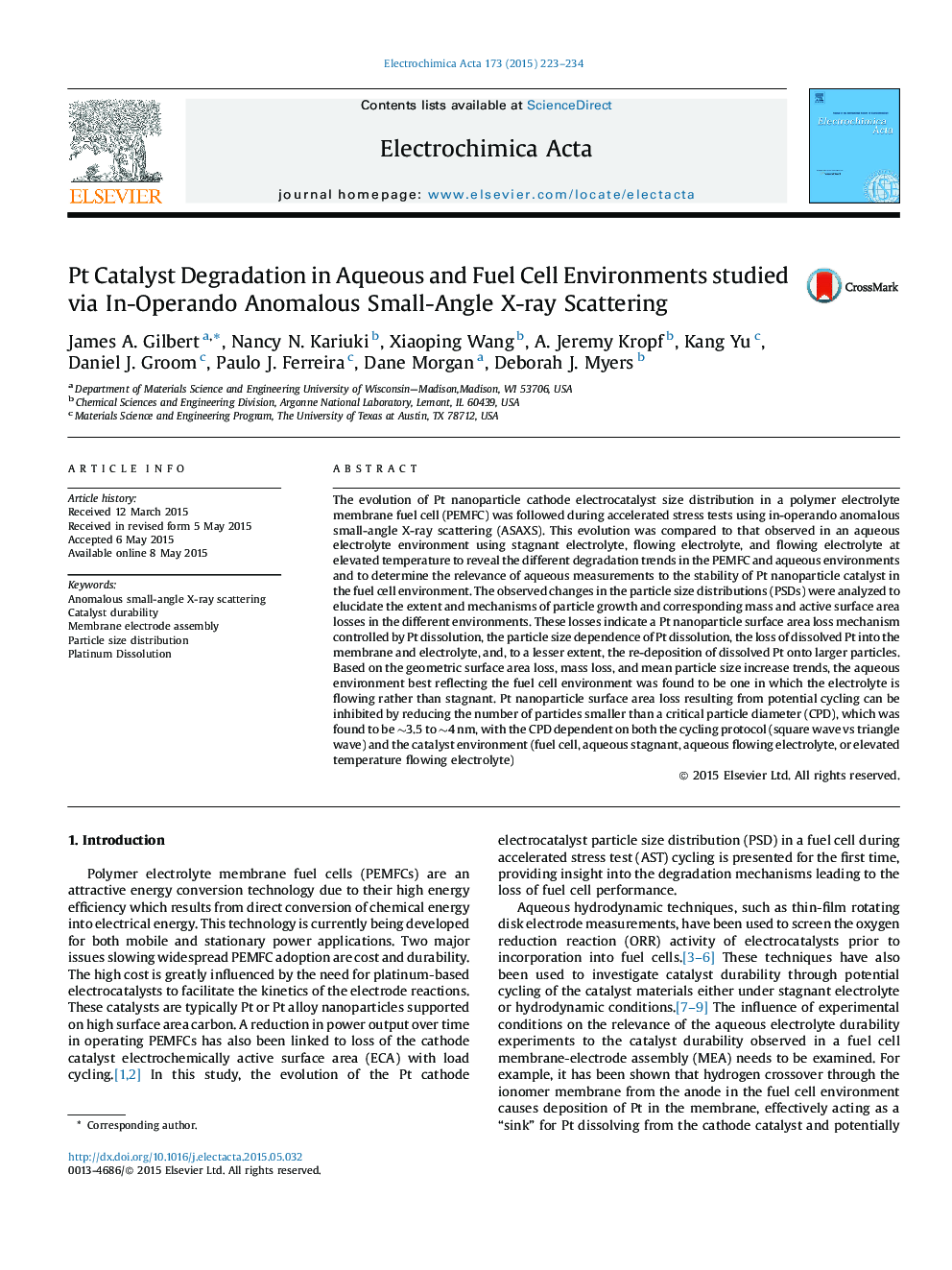| کد مقاله | کد نشریه | سال انتشار | مقاله انگلیسی | نسخه تمام متن |
|---|---|---|---|---|
| 183779 | 459560 | 2015 | 12 صفحه PDF | دانلود رایگان |

The evolution of Pt nanoparticle cathode electrocatalyst size distribution in a polymer electrolyte membrane fuel cell (PEMFC) was followed during accelerated stress tests using in-operando anomalous small-angle X-ray scattering (ASAXS). This evolution was compared to that observed in an aqueous electrolyte environment using stagnant electrolyte, flowing electrolyte, and flowing electrolyte at elevated temperature to reveal the different degradation trends in the PEMFC and aqueous environments and to determine the relevance of aqueous measurements to the stability of Pt nanoparticle catalyst in the fuel cell environment. The observed changes in the particle size distributions (PSDs) were analyzed to elucidate the extent and mechanisms of particle growth and corresponding mass and active surface area losses in the different environments. These losses indicate a Pt nanoparticle surface area loss mechanism controlled by Pt dissolution, the particle size dependence of Pt dissolution, the loss of dissolved Pt into the membrane and electrolyte, and, to a lesser extent, the re-deposition of dissolved Pt onto larger particles. Based on the geometric surface area loss, mass loss, and mean particle size increase trends, the aqueous environment best reflecting the fuel cell environment was found to be one in which the electrolyte is flowing rather than stagnant. Pt nanoparticle surface area loss resulting from potential cycling can be inhibited by reducing the number of particles smaller than a critical particle diameter (CPD), which was found to be ∼3.5 to ∼4 nm, with the CPD dependent on both the cycling protocol (square wave vs triangle wave) and the catalyst environment (fuel cell, aqueous stagnant, aqueous flowing electrolyte, or elevated temperature flowing electrolyte)
Journal: Electrochimica Acta - Volume 173, 10 August 2015, Pages 223–234